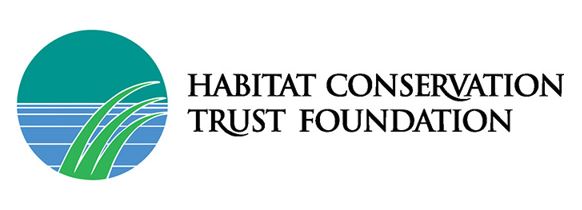
The Fraser Valley is an incredibly important region for food production that directly supports food security. Often agricultural lands are large (in comparison to residential, commercial areas) and many have not been heavily developed or modified. These agricultural lands contribute towards ecological services that benefit people and communities. FVWC's objective is to assist in enhancing the natural values on farmlands while supporting agricultural and hobby farmers by:
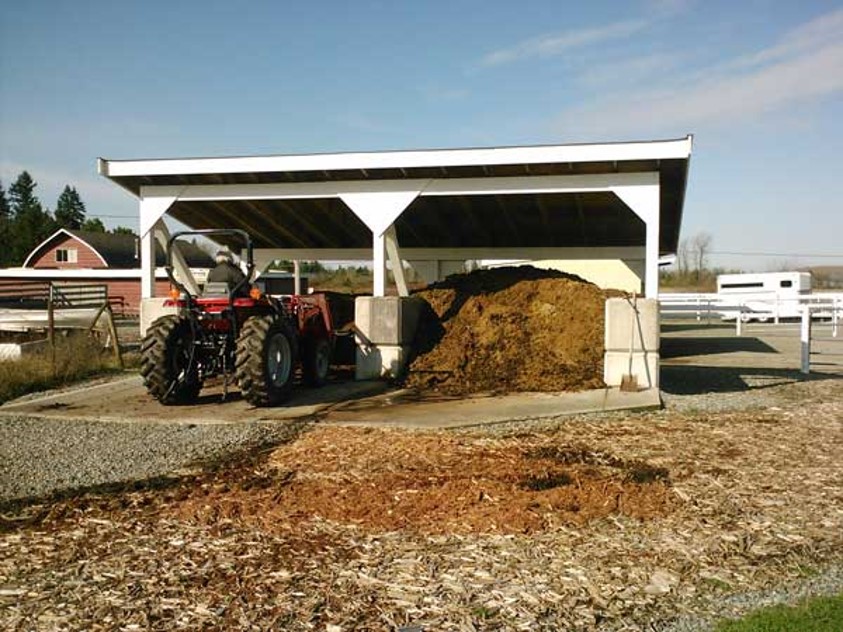
2013 Ecosystem Services of Dairy Farms in the Eastern Fraser Valley. An exploration of Two Case Studies
2021 Hobby Farms Project
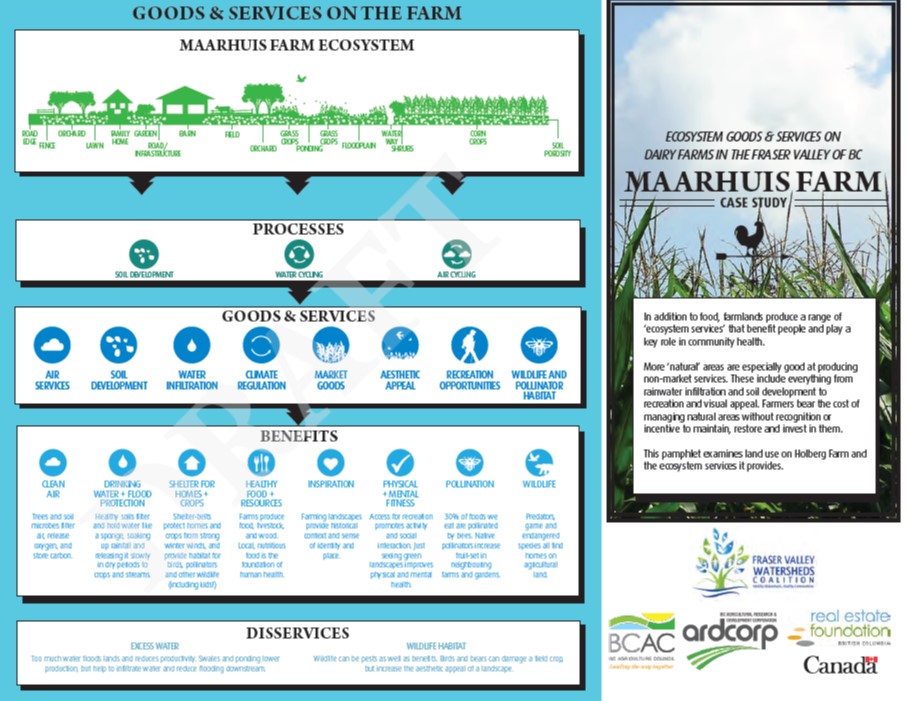
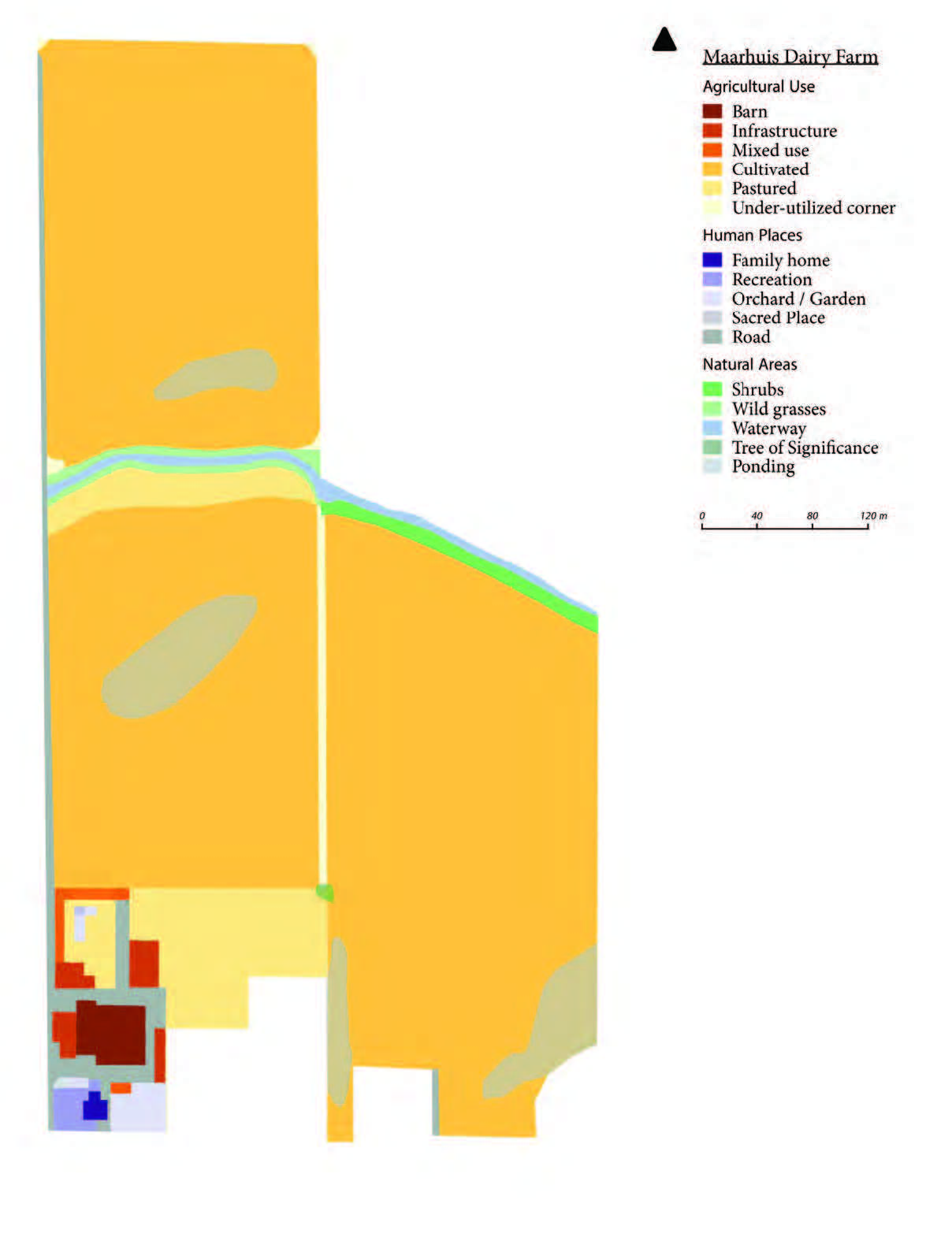
Maarhuis Farm - Mapped Goods and Services on the farmscale.
Image: Maarhuis Farm Ecosystem. Identifying the processes, goods and services, benefits and disservices at the farmscale from mapping and dialogue with the Dairy farmer.
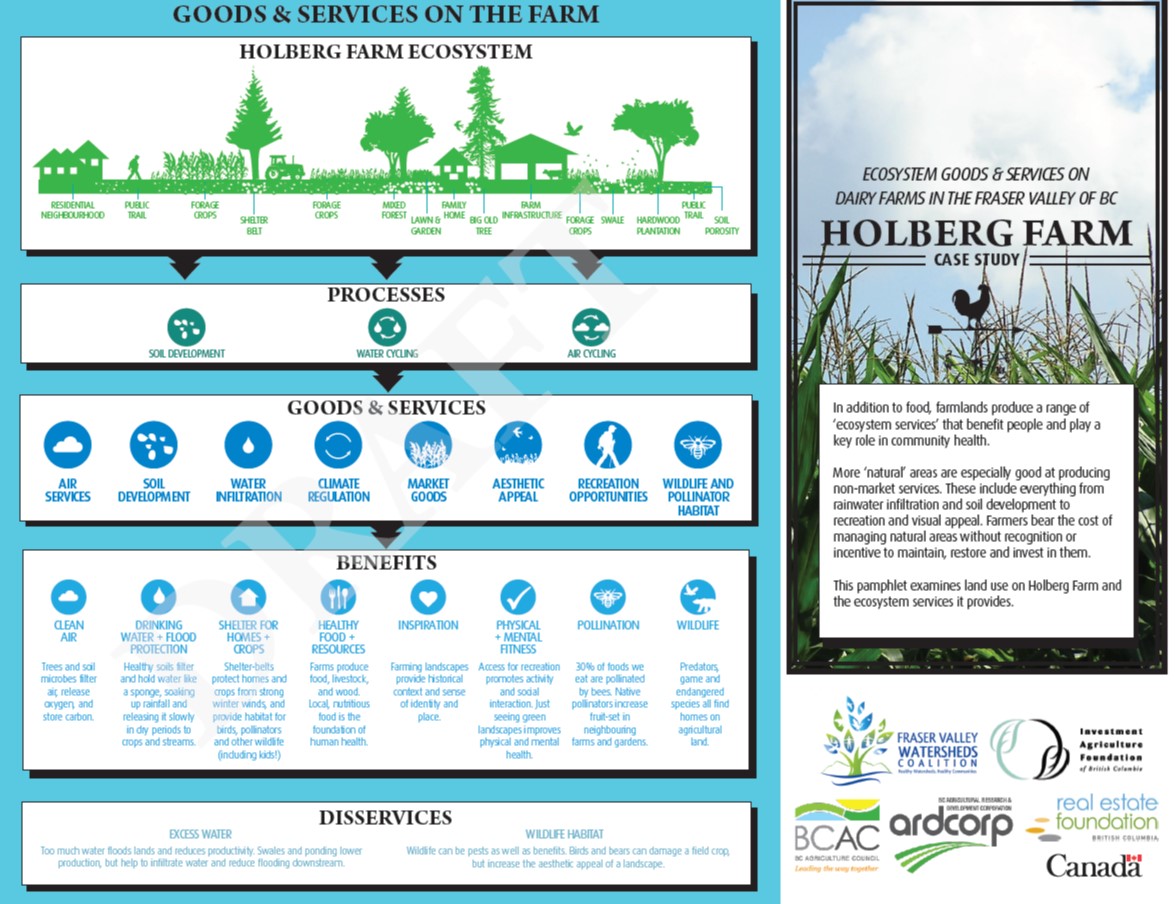
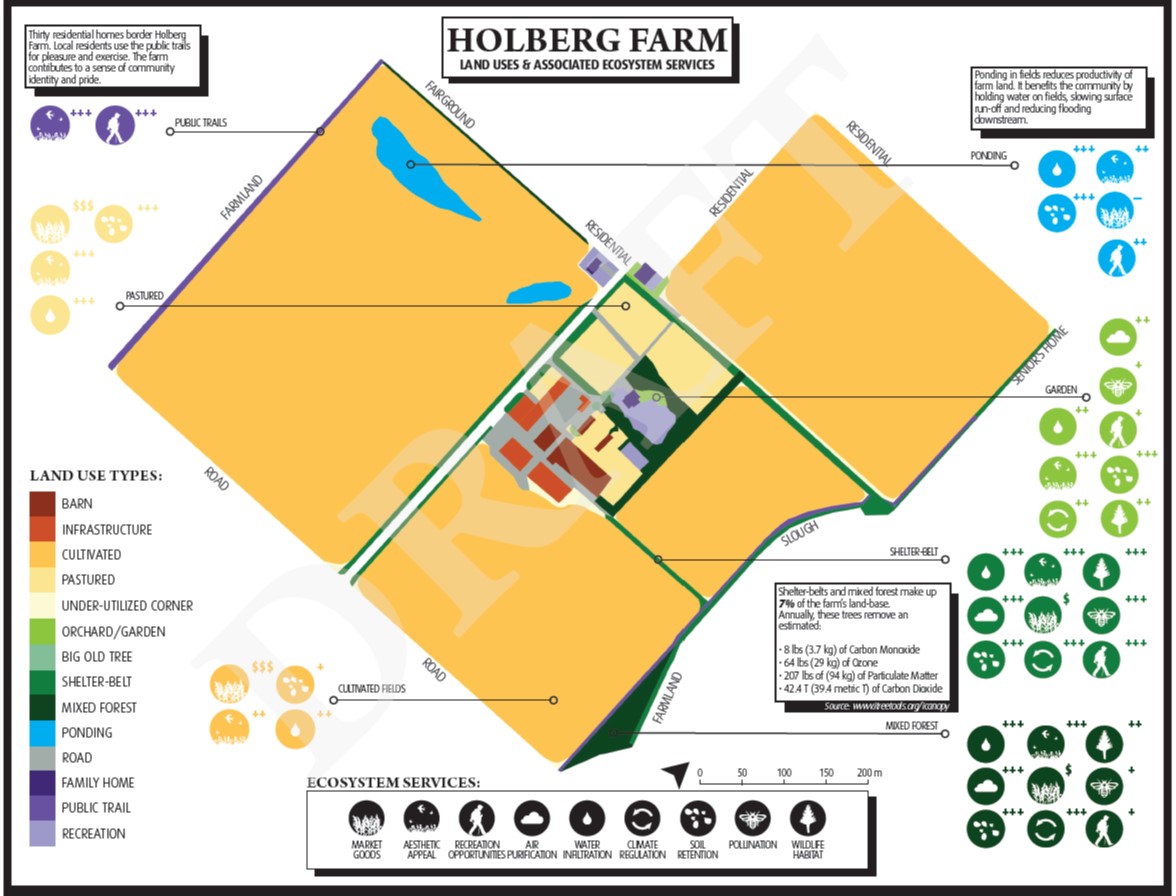
Holberg Farm - Mapped Goods and Services on the farmscale.
Farms that underpin communities in the eastern Fraser Valley have long grown and sold to market a variety of goods, from fruits and vegetables to grains, livestock and milk. Those farms have also produced, and continue to produce, other benefits to people, ranging from soil conservation and flood protection to aesthetic appeal and salmon habitat. Historically, these non-market benefits have not been recognized, resulting in the undervaluation of the natural areas that provide them.
This project sought to identify and communicate Ecological Goods and Services provided by dairy farms in the eastern Fraser Valley of British Columbia, and to understand how producers view their importance.
FVWC created a pilot process to identify relevant ecosystem services produced on two dairy farms, and interviewed farmers regarding the importance of those services to their operation. Farmers identified the beneficiaries of those goods and services produced, and ranked their relative value, both on and off the farm. While doing so they described their own motivations for establishing, protecting and enhancing natural areas.
The most interesting result was the critical importance farmers placed on ‘cultural services’ – aesthetic appeal, recreation, inspiration, sense of place – to both the farmer (on-farm) and people around the farm (off-farm). Farmers also highly valued soil development and retention, and water infiltration and attenuation. Habitat services were ranked of relatively low value on-farm but farmers perceived a much higher value off-farm. Some ‘disservices’ were also identified, especially saturated soils that hinder growth and machine access in the spring. It should be noted that the concept of Ecosystem Goods and Services is not a single tool but rather a perspective and approach that permits the use of many different tools. These case studies are intended as a tool for dialogue around the importance of healthy ecosystems and sustainable farm practices.
Takeaways
Understanding the ecosystem goods and services at the individual farmscale helps empower farmers to better understand the natural values on their property and how it contributes towards climate regulation, air services, wildlife habitat, soil services and goods that benefits their own farm and the community at large.
By gaining farmer involvement in ranking and mapping their individual property for these natural ecosystem services helps promote understanding and motivators for farm practice improvements and property enhancements.
Cultural values are strong motivators for farmers and landowner to maintain or enhance farm practices, as these practices will result in improved views and aesthetics creating a stronger sense of place.
FVWC can support farmers with identifying and mapping ecosystem values on farmland and finding opportunity to enhance farmland to support increased ecosystem services that reflect farmer values.
There are other incentive based programs such as Farmland Advantage that also offer incentives for farmers.
You can read the complete report here.
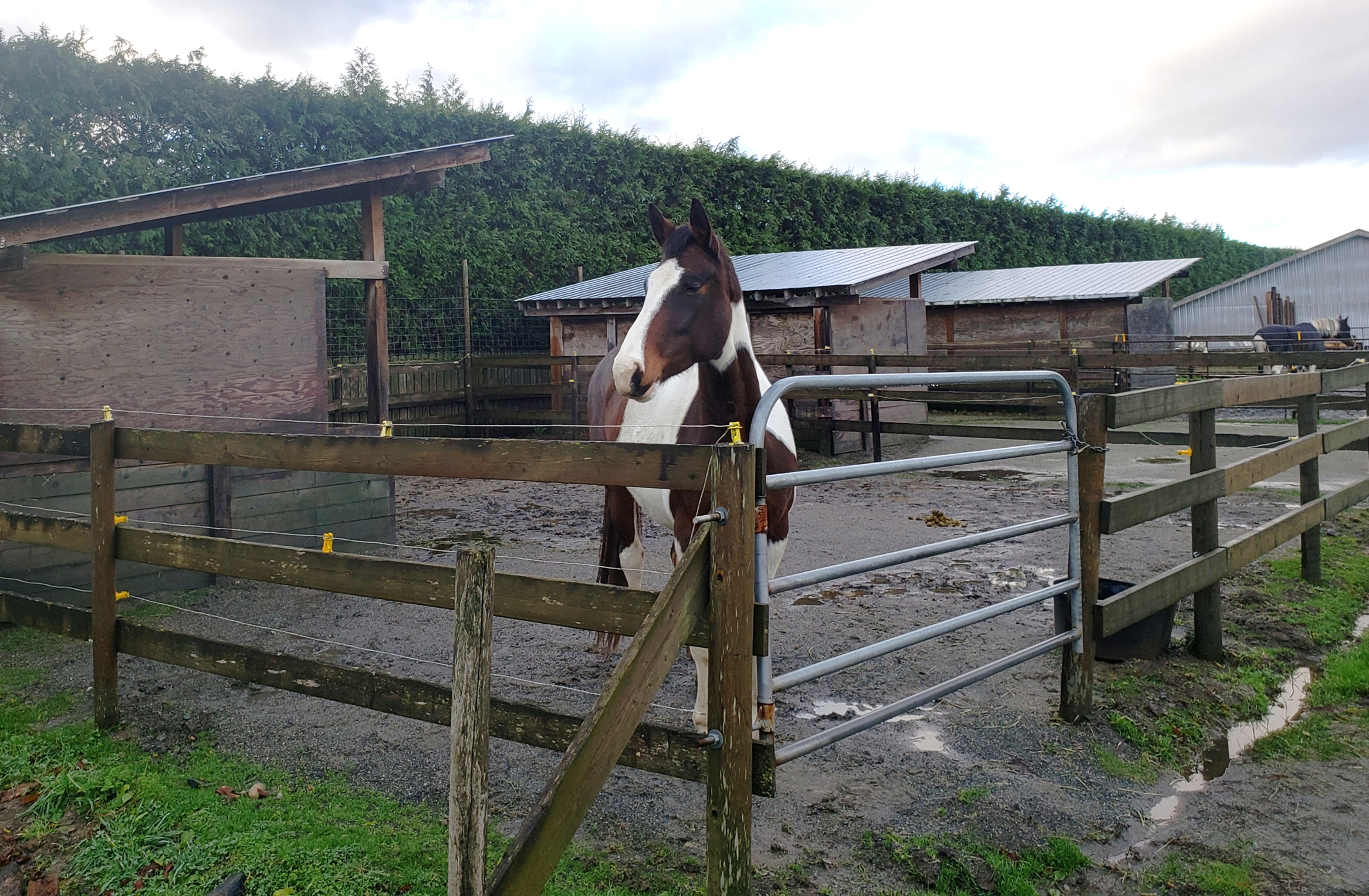

The Hobby Farms Project focuses on identifying if there are limitations, gaps or barriers preventing farm-owners from acting on best practices, particularly farms that may not qualify for the Environmental Farm Plan and as a result may not benefit from the support.
Farms are dynamic and have specific needs and functions related to their local environment. The long-term wellbeing of farms and animals depends on good quality soil, water and natural resources. To conserve these resources good management needs to include safe-guarding the environment. An effective way to accomplish this broad goal is through successful environmental farm planning and implementing good practices.
We review the Code of Practice for Agricultural Environmental Management (AEM Code) and look at three program areas:
It is vital to maintain clean water for people and animals. By keeping animals out of waterways, locating manure piles and chemicals away from waterways and wells, creating and maintaining riparian areas, and directing storm water away from high use areas, chances of water contamination are greatly reduced.
The Code of Practice for Agriculture Environmental Management defines “watercourse” to include drainage ditches that flow into surface water such as a lake, river, creek, canal, etc.
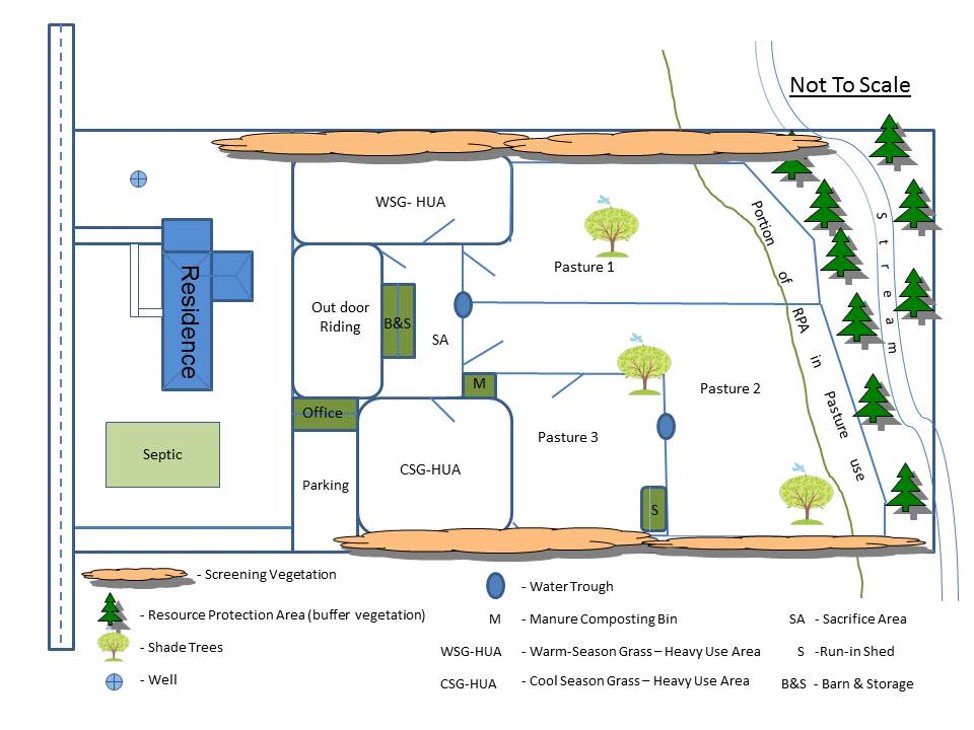
Examples of Water Management Options at the Farm Level
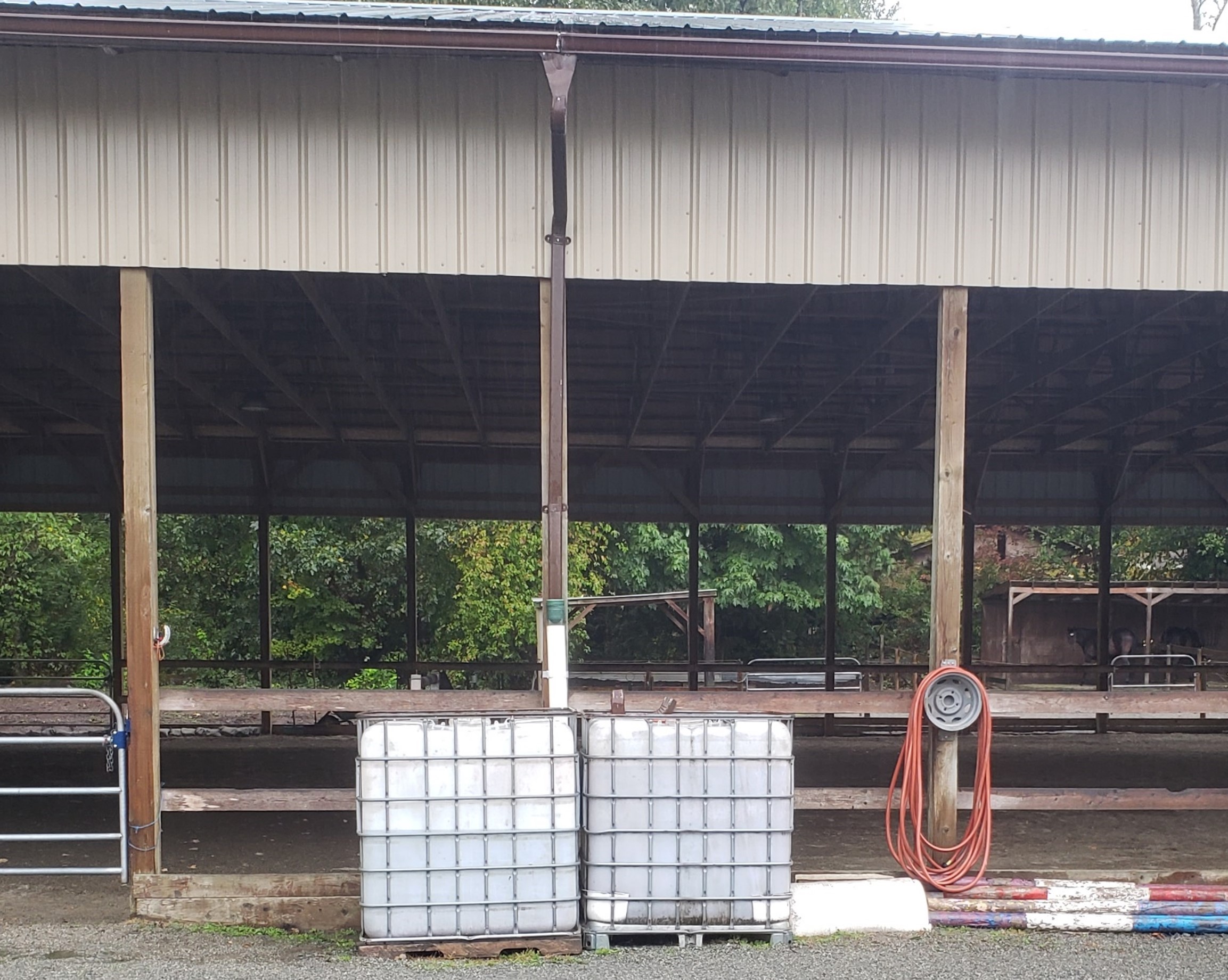
Capture & Reuse Storm –Rainwater
What: Capture rainwater from impervious surfaces to store and use for benefits to farm.
How to Capture: You can do this by adding gutters that pour into water holding tanks.
How to Reuse: use the captured rainwater as dust abatement in a riding arena.
Benefits:
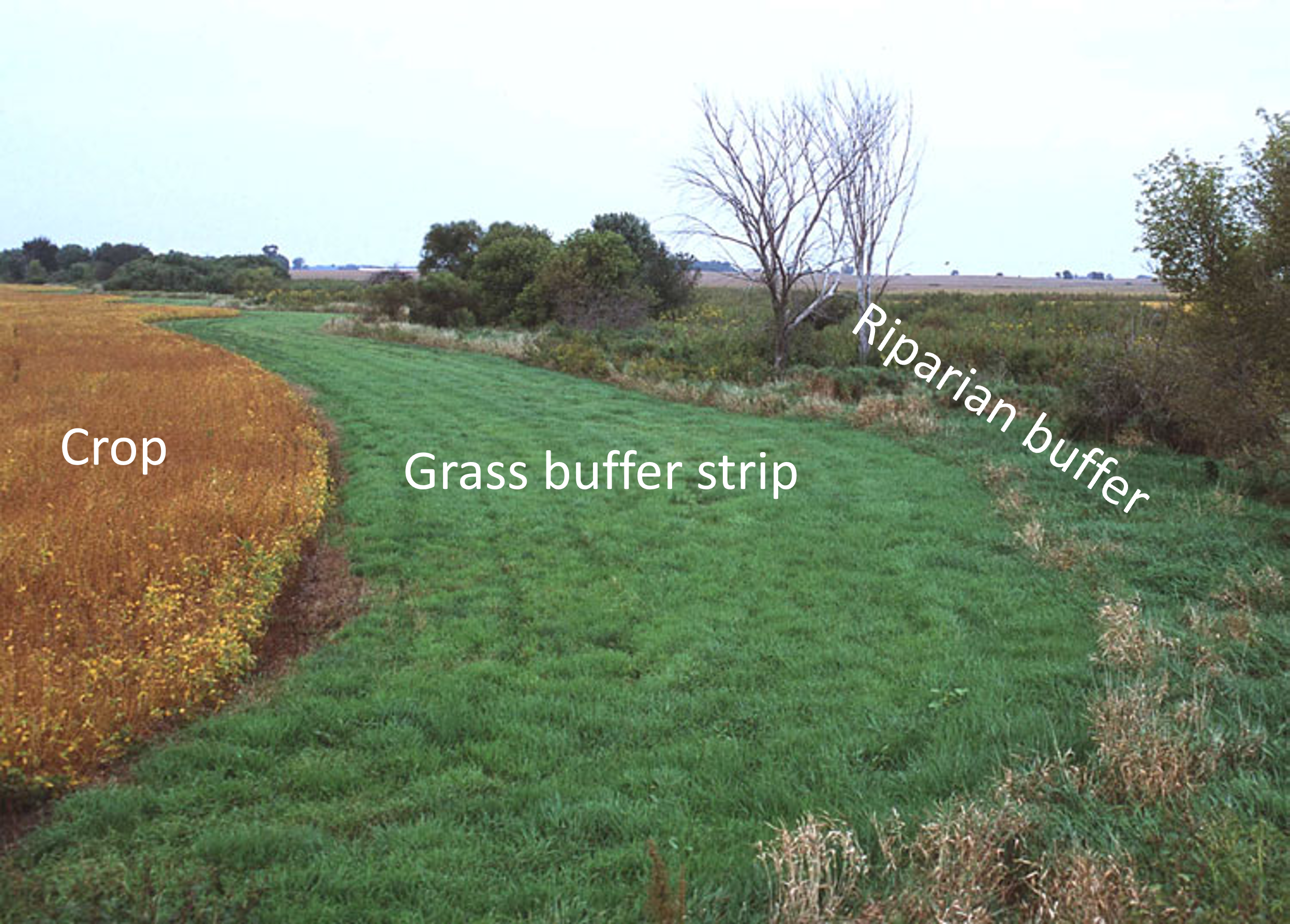
Prevent and slow farm surface-water runoff
What: Preventing, slowing and re-directing surface-water runoff from entering water wells and watercourses.
How to Prevent:
Reduce compaction on the landscape by reducing tillage and keeping machinery/animals off land during wet months
Redirect water into wetlands and bioswales (meant to hold and clean H20) by shaping the land
Plant watercourse buffers such as grass buffers and riparian buffers
Benefits:
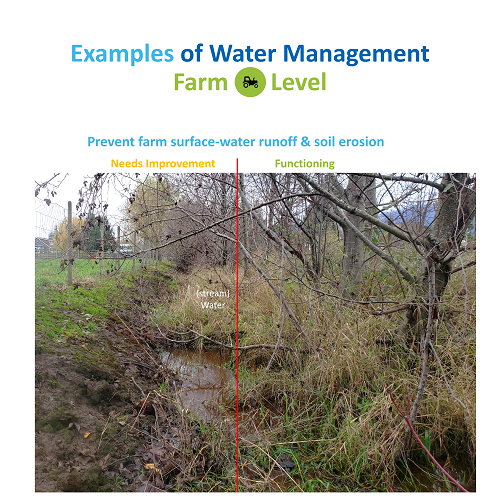
Reduce soil erosion potential
What: Creating riparian buffers improves soil retention.
How to Prevent:
Lack of streamside vegetation poses RISKS
Intact streamside vegetation poses BENEFITS
By creating and maintain riparian areas you can prevent or reduce erosion of your farms most precious resource, soil!
Managing manure is important because it can save you money, and can be turned into a valuable compost that is a natural soil enhancer for fields and pastures. Proper manure management can increase the volume of forage on your land to benefit your horses and proper management can help reduce carbon dioxide CO2 which reduces negative impact on the climate and can reduce the potential for water pollution.

Composting your horse’s manure is simple and can save you money! Horse manure can be easily composted using methods customised to the needs of your farm. With a little energy and a one-time investment, your “manure problem” can be turned into valuable compost – a natural soil enhancer for your pastures.
Step 1: Calculate manure production- how many horses are housed on your property?
Step 2: Consider location- know what the regulations in the Code of Practice for Agriculture Environmental Management (AEM code) are for distance to water courses, wells, paddocks and stalls. This is probably the most important thing to consider. Healthy Farms = Healthy Horses
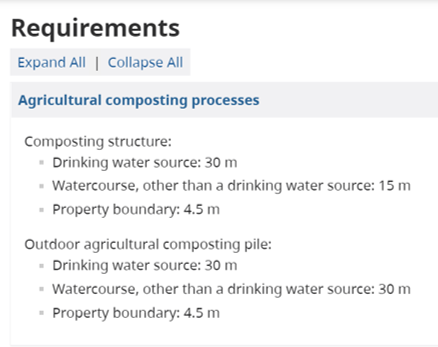

By protecting manure piles from rain, you can retain nutrients present in manure rather than letting them run off/ leach out. This will increase pasture yields thereby reducing forage costs for horse owners.
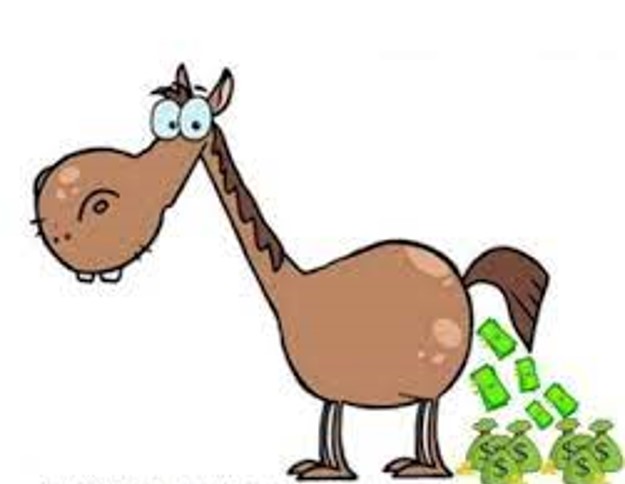
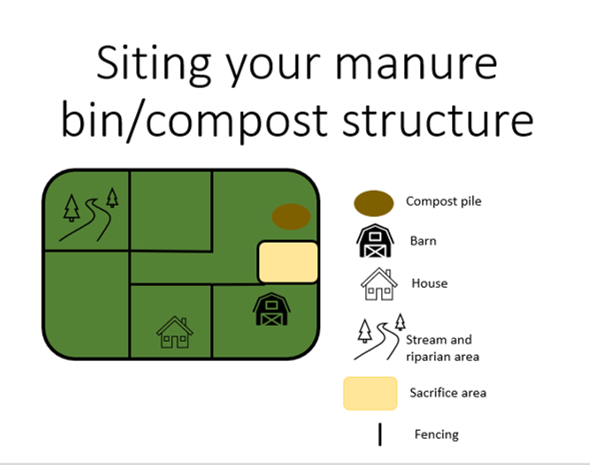
Step 3: Designing your system. For most small lot farm owners a closed in bin system works best. Next consider rain fall amounts in your area. Most areas in the lower mainland need a covered manure composting bin.
Step 4: Managing compost- actively turning the pile is key to reducing it by up to 2/3 and producing a weed free product to use as a soil enhancer on pastures.
Step 5: Finished compost can be spread over pastures to enhance growth of forage crops and used in your garden to grow delicious veggies and beautiful flowers!
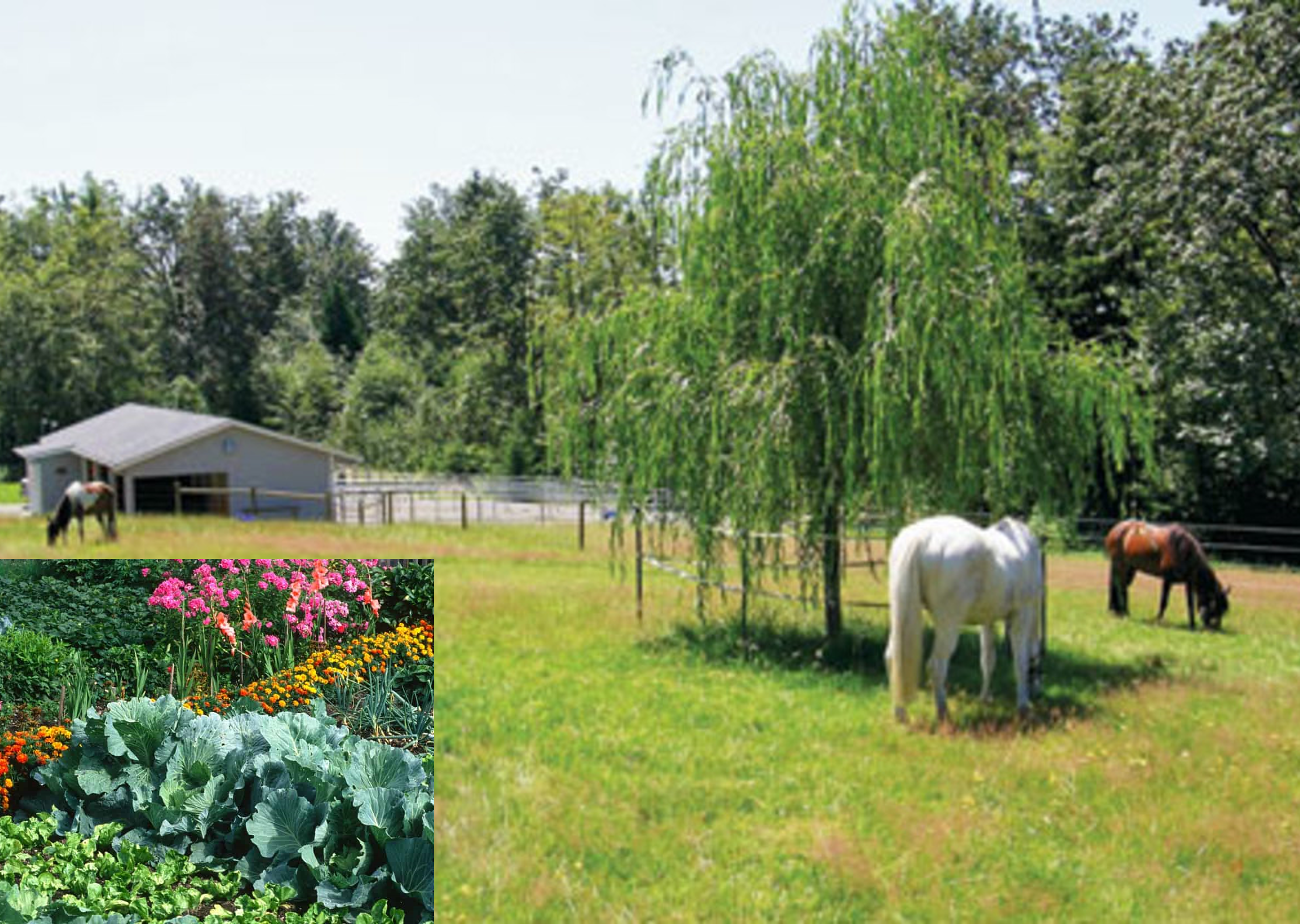
All land owners have a responsibility to manage their properties. Private property owners are mandated by law to control certain weeds on their properties. Pasture management is important because it can prevent noxious and invasive weeds from establishing. Weeds are a significant threat to biodiversity and some weeds can threaten the health and wellbeing of livestock.
Did you know that when you use a rotational grazing system on your farm it can save you money?! It allows you to support more animals on less land, provide forage for your horses that doesn’t have to travel hundreds of miles, promotes growth of desired grass species and reduces weeds and increase the health of your horse by assisting with control of parasite cycles.
Pasture Management is very important for horses
Why? What makes horses different?
Horses adapted to arid grasslands. In their natural environment, they roam on extensive rangeland and stay in one area for only a short time with minimal impact on the environment. When horses are kept on small acreages, horse owners must use good management practices to minimize negative impacts on the land and horses.
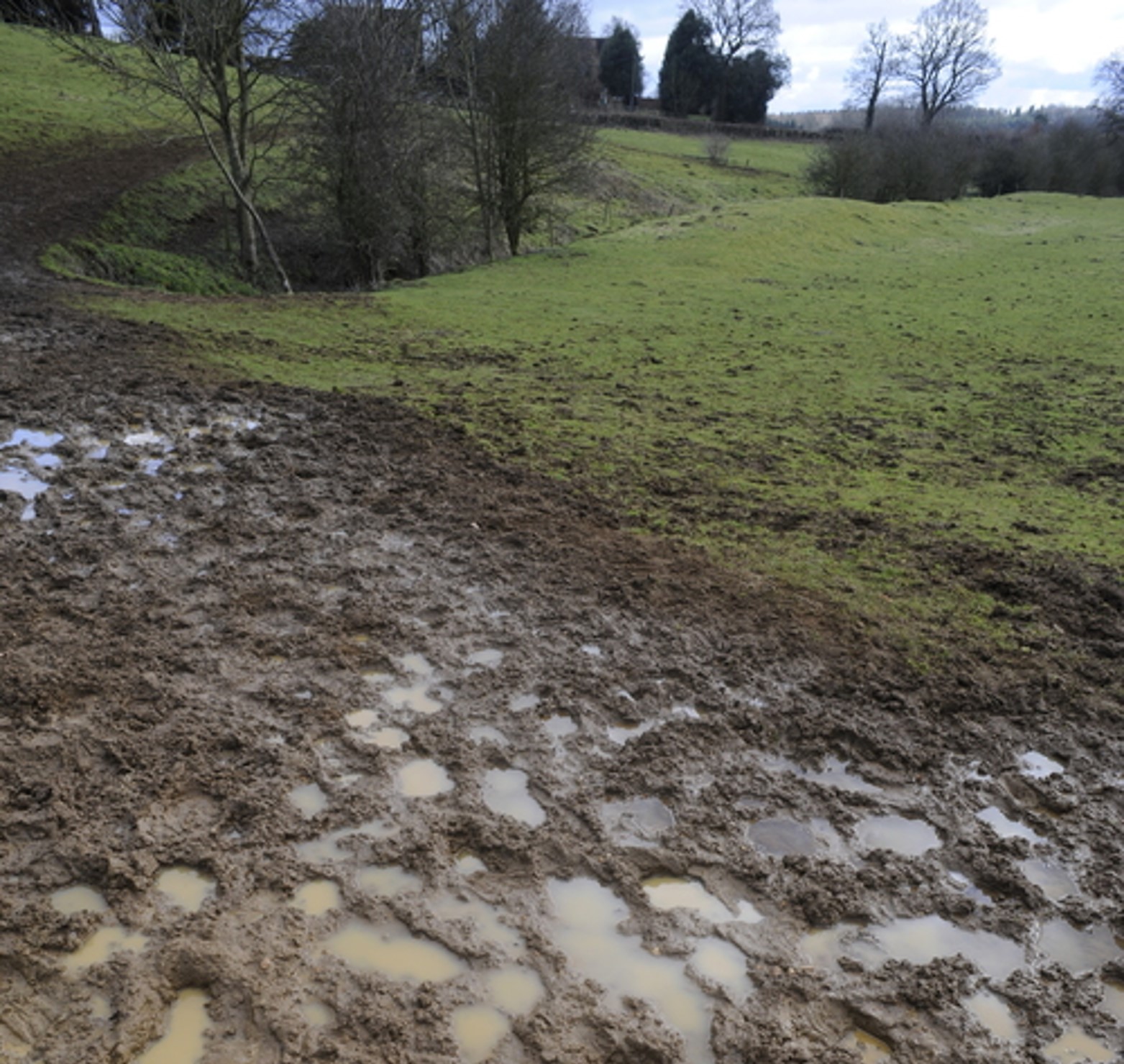
Wet, muddy pastures can cause environmental damage through runoff, also bare soil promotes weed growth
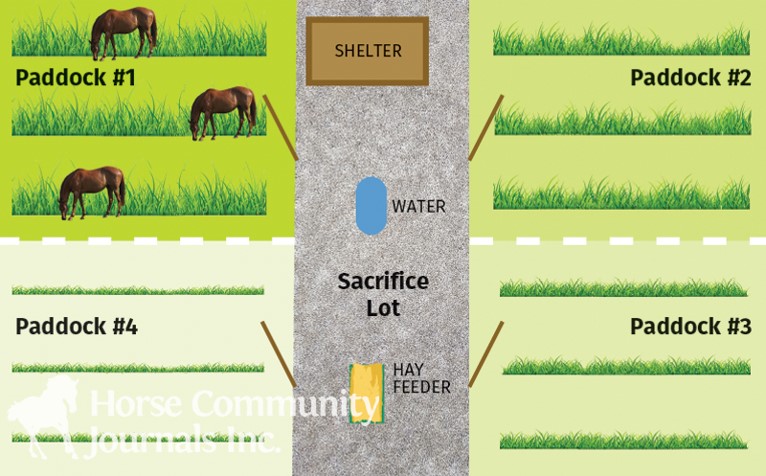
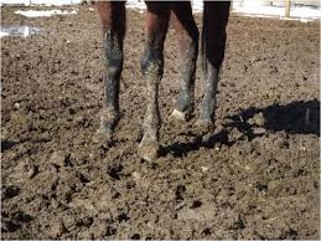
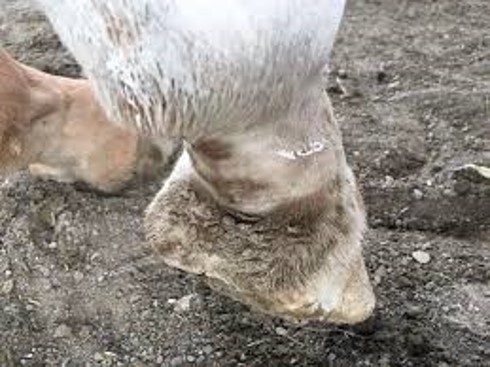
Horses can get mud fever due to wet, muddy paddocks
How to manage your pastures:
Evaluate your soil -Testing your soil will help to determine your pH level and identify nutrient deficiencies your pasture. It will save you money to test your soil to avoid adding unneeded fertilizers. Soil testing in the lower mainland can be through Element labs in Surrey BC.

Over seed- Addressing bare spots and thin areas by overseeding with a pasture mix, one that works well in your climate will: increase forage, cut down on hay costs and keep weeds at bay.

Lime- While adding fertilizer may be unnecessary, using lime is crucial in areas where soil is acidic (low pH). When soil pH is low, nutrients in the soil cannot be used by plants, and beneficial organisms are not as active. It is more cost effective to correct your pH by adding lime, before focusing on fertilizer needs.
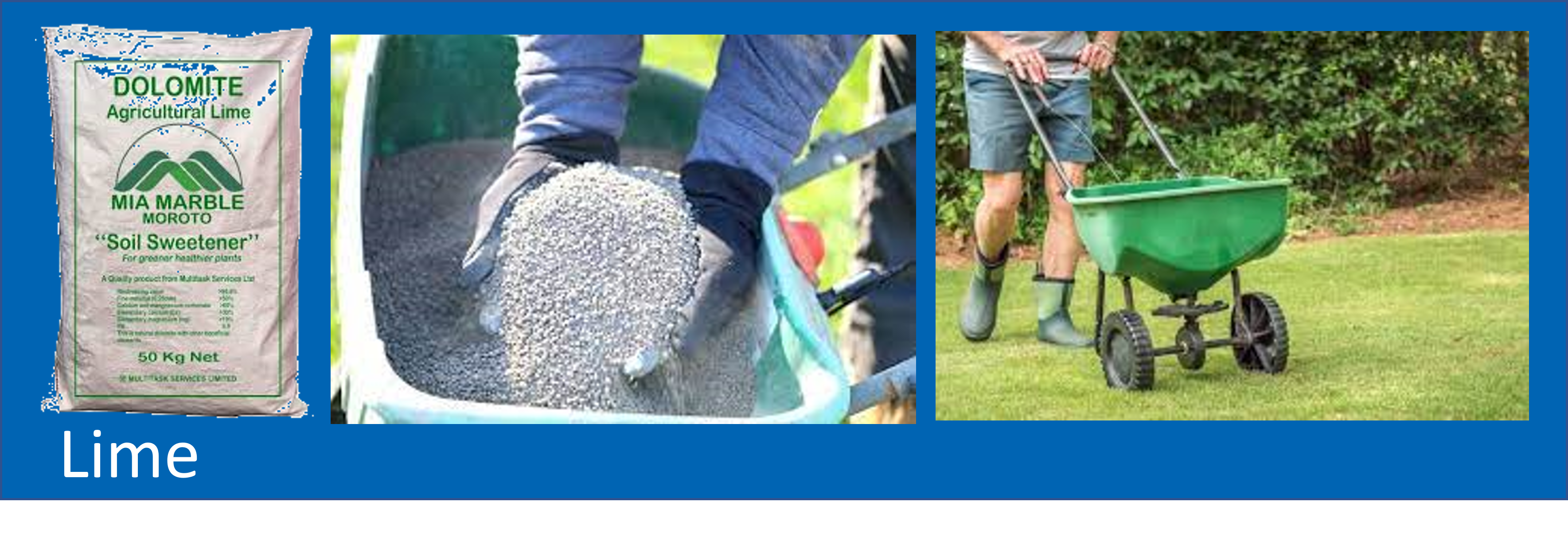
Recognition
This pilot project was funded by the Habitat Conservation Trust Foundation, as part of their Covid Economic Stimulus Initiative.
